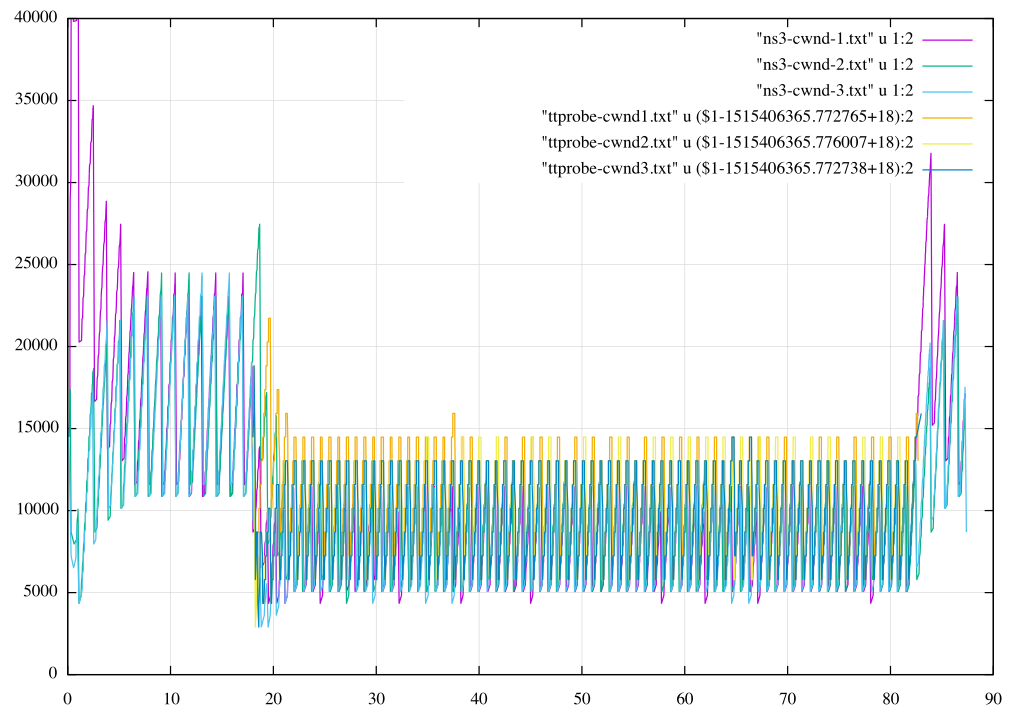Servizio Mailing List Tor Vergata
- From: Michael Welzl < >
- To:
- Subject: Coolness !
- Date: Mon, 8 Jan 2018 12:46:36 +0100
| Hey, I just wanted to share coolness :) two pictures that amaze me - maybe it’s just me … I did some tests today to see if ns-3 is getting stable for real-life tests in the testbed. The attached images show 3 flows originating from ns-3, which are joined by 3 iperf flows (from Linux hosts) after around 20 seconds. One plot is a throughput plot, measured on the receiver side per port number, from the TEACUP testbed. The other plot shows cwnd values - the cwnd values of the iperf flows were obtained with ttprobe, whereas the three ns-3 flows are the normal cwnd ouput files from ns-3 ! :-) (to be clear, for ns-3, it’s only one instance of an application running - just an ns-3 instance generating 3 senders) Harder to see in the cwnd plots, and not extremely surprising: iperf is a bit more efficient than ns-3. Oh well :-) I don’t think we’re really going to let ns-3 *compete* against iperf/Linux for our results - rather, we’ll test each in isolation, or we’re probably measuring the efficiency of the ns-3 simulator more than anything else… - but this seems to work really nicely! Cheers, Michael   |
- Coolness !, Michael Welzl
Archivio con motore MhonArc 2.6.16.